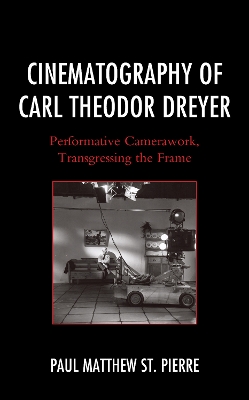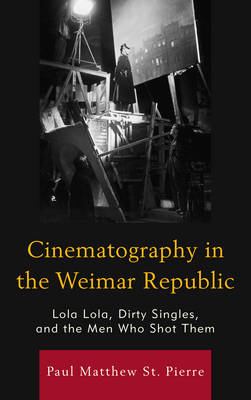The Fairleigh Dickinson University Press Communication Studies
2 total works
Legendary Danish filmmaker Carl Theodor Dreyer (3 February 1889-20 March 1968) was born in Copenhagen to a single mother, Josefine Bernhardine Nilsson, a Swede. His Danish father, Jens Christian Torp, a married farmer, employed Nilsson as a housekeeper. After spending his first two years in orphanages, Dreyer was adopted by Carl Theodor Dreyer, a typographer, and his wife, Inger Marie Dreyer. He was given his adoptive father’s name. At age 16, he renounced his adoptive parents and worked his way into the film industry as a journalist, title card writer, screenwriter, and director. Throughout his career he concealed his birth name and the details of his upbringing and his adult private life, which included a period in which he explored his homosexual orientation and endured a nervous breakdown. Despite his relatively small output of fourteen feature films and seven documentary short films, 1919-64, he is considered one of the greatest filmmakers in history because of the diversity of his subjects, themes, techniques, and styles, and the originality of the bold visual grammar he mastered. In Cinematography of Carl Theodor Dreyer: Performative Camerawork, Transgressing the Frame, I argue: 1) that Dreyer, an anonymous orphan, an unsourced subject, manufactured his individuality through filmmaking, self-identifying by shrouding himself in the skin of film, and 2) that, as a screenwriter-director who blocked entire feature films in his imagination in advance—sets, lighting, photography, shot breakdowns, editing—and imposed his vision on camera operators, lighting directors, actors, and crews in production, he saw filmmaking essentially as camerawork and he directed in the style of a performative cinematographer.
In film history, director-cinematographer collaborations were on a labor spectrum, with the model of the contracted camera operator in the silent era and that of the cinematographer in the sound era. But in Weimar era German filmmaking, 1919-33, a short period of intense artistic activity and political and economic instability, these models existed side by side due to the emergence of camera operators as independent visual artists and collaborators with directors.
Berlin in the 1920s was the chief site of the interdisciplinary avant-garde of the Modernist movement in the visual, literary, architectural, design, typographical, sartorial, and performance arts in Europe. The Weimar Revolution that arose in the aftermath of the November 1918 Armistice and that established the Weimar Republic informed and agitated all of the art movements, such as Expressionism, Dada, the Bauhaus, Minimalism, Objectivism, Verism, and Neue Sachlichkeit ("New Objectivity"). Among the avant-garde forms of these new stylistically and culturally negotiated arts, the cinema was foremost and since its inception had been a radical experimental practice in new visual technologies that proved instrumental in changing how human beings perceived movement, structure, perspective, light exposure, temporal duration, continuity, spatial orientation, human postural, facial, vocal, and gestural displays, and their own spectatorship, as well as conventions of storytelling like narrative, setting, theme, character, and structure. Whereas most of the arts mobilized into schools, movements, institutions, and other structures, cinema, a collaborative art, tended to organize around its ensembles of practitioners. Historically, the silent film era, 1895-1927, is associated with auteurs, the precursors of Francois Truffaut and other filmmakers in the 1960s: actuality filmmakers and pioneers like R. W. Paul and Fred and Joe Evans in England, Auguste and Luis Lumiere and Georges Melies in France, and Charles Chaplin and Buster Keaton in America, who, by managing all the compositional, executional, and editorial facets of film production-scripting, directing, acting, photographing, set, costume, and lighting design, editing, and marketing-imposed their personal vision or authorship on the film. The dichotomy of the auteur and the production ensemble established a production hierarchy in most filmmaking. In formative German silent film, however, this hierarchy was less rank or class driven, because collaborative partnerships took precedence over single authorship. Whereas in silent film production in most countries the terms filmmaker and director were synonymous, in German silent film the plural term filmemacherin connoted both directors and cinematographers, along with the rest of the filmmaking crew. Thus, German silent filmmakers' principle contribution to the new medium and art of film was less the representational iconographies of Expressionist, New Objective, and Naturalist styles than the executional practice of co-authorship and co-production, in distinctive cinematographer-director partnerships such as those of cinematographer Theodor Sparkuhl and director Ernst Lubitsch; Fritz Arno Wagner with F. W. Murnau, Fritz Lang, and G. W. Pabst; Rudolf Mate with Carl Theodor Dreyer; Guido Seeber with Lang and Pabst; and Carl Hoffmann with Lang and Murnau.
Berlin in the 1920s was the chief site of the interdisciplinary avant-garde of the Modernist movement in the visual, literary, architectural, design, typographical, sartorial, and performance arts in Europe. The Weimar Revolution that arose in the aftermath of the November 1918 Armistice and that established the Weimar Republic informed and agitated all of the art movements, such as Expressionism, Dada, the Bauhaus, Minimalism, Objectivism, Verism, and Neue Sachlichkeit ("New Objectivity"). Among the avant-garde forms of these new stylistically and culturally negotiated arts, the cinema was foremost and since its inception had been a radical experimental practice in new visual technologies that proved instrumental in changing how human beings perceived movement, structure, perspective, light exposure, temporal duration, continuity, spatial orientation, human postural, facial, vocal, and gestural displays, and their own spectatorship, as well as conventions of storytelling like narrative, setting, theme, character, and structure. Whereas most of the arts mobilized into schools, movements, institutions, and other structures, cinema, a collaborative art, tended to organize around its ensembles of practitioners. Historically, the silent film era, 1895-1927, is associated with auteurs, the precursors of Francois Truffaut and other filmmakers in the 1960s: actuality filmmakers and pioneers like R. W. Paul and Fred and Joe Evans in England, Auguste and Luis Lumiere and Georges Melies in France, and Charles Chaplin and Buster Keaton in America, who, by managing all the compositional, executional, and editorial facets of film production-scripting, directing, acting, photographing, set, costume, and lighting design, editing, and marketing-imposed their personal vision or authorship on the film. The dichotomy of the auteur and the production ensemble established a production hierarchy in most filmmaking. In formative German silent film, however, this hierarchy was less rank or class driven, because collaborative partnerships took precedence over single authorship. Whereas in silent film production in most countries the terms filmmaker and director were synonymous, in German silent film the plural term filmemacherin connoted both directors and cinematographers, along with the rest of the filmmaking crew. Thus, German silent filmmakers' principle contribution to the new medium and art of film was less the representational iconographies of Expressionist, New Objective, and Naturalist styles than the executional practice of co-authorship and co-production, in distinctive cinematographer-director partnerships such as those of cinematographer Theodor Sparkuhl and director Ernst Lubitsch; Fritz Arno Wagner with F. W. Murnau, Fritz Lang, and G. W. Pabst; Rudolf Mate with Carl Theodor Dreyer; Guido Seeber with Lang and Pabst; and Carl Hoffmann with Lang and Murnau.

